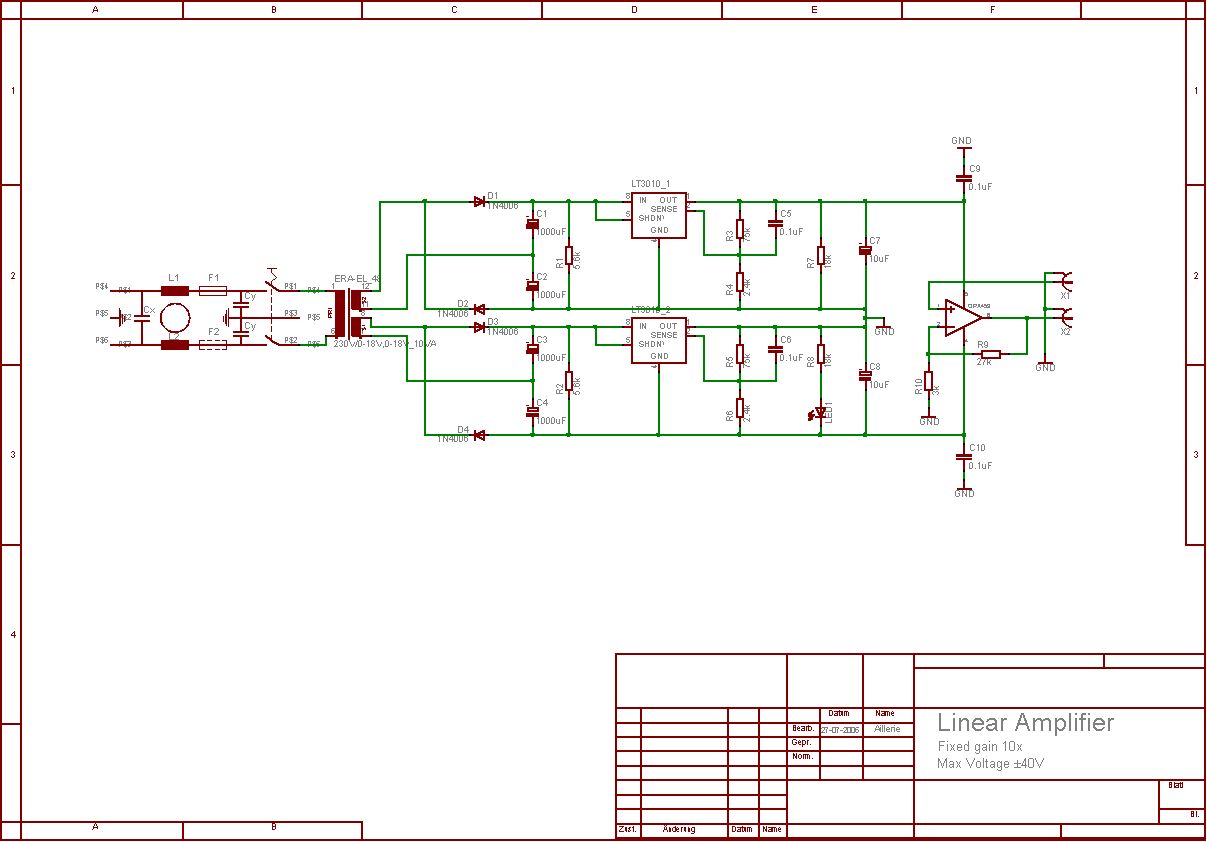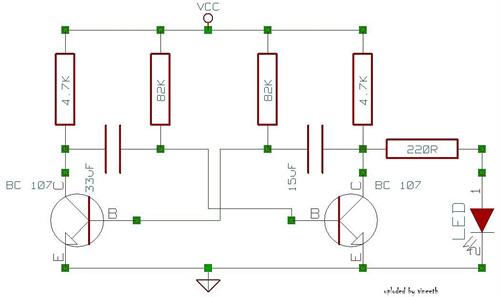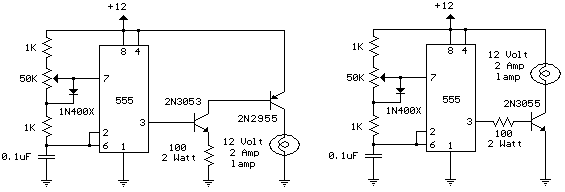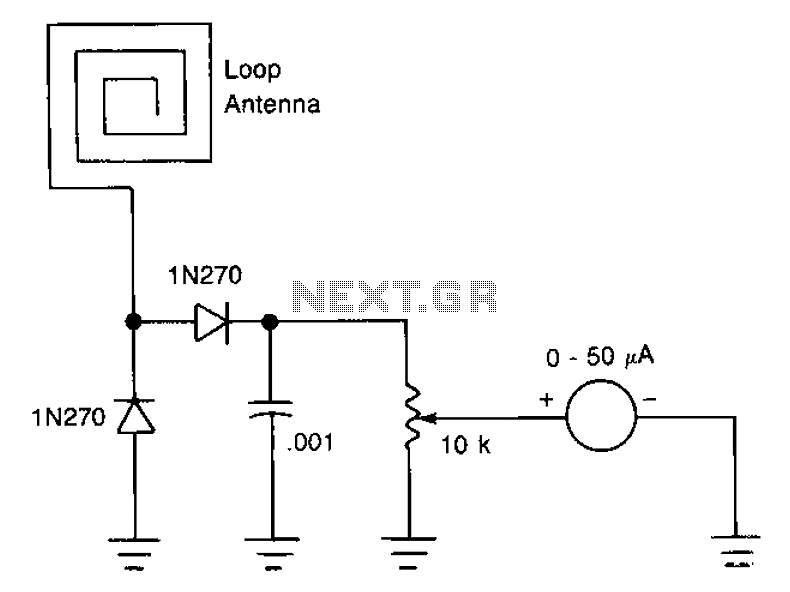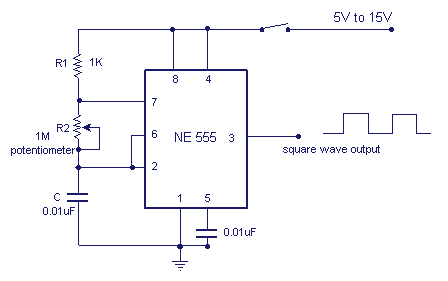
Gas flameout alarm circuit
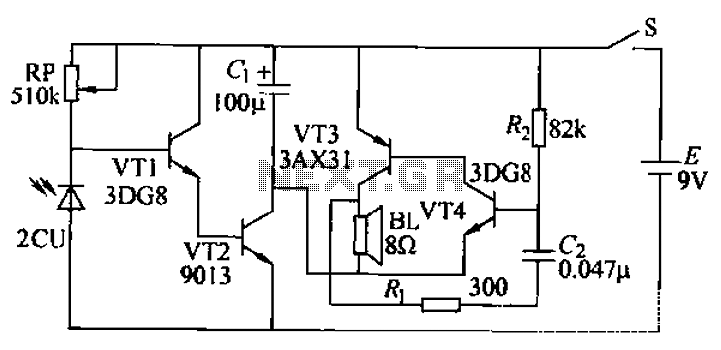
Boiling water or cooking with a gas stove can sometimes lead to the fire being extinguished due to water spills, which can result in a significant gas overflow and pose a risk of poisoning. This example describes a stall alarm circuit that activates a loud alarm when the fire goes out. The circuit is illustrated in Figure 13-27. It consists of photosensitive diodes and transistors VT1 and VT2, which form an electronic light control switch, while transistors VT3 and VT4 create a complementary audio oscillator. When the fire burns strongly, the photodiode detects infrared radiation, causing its resistance to drop, which results in VT1 and VT2 being closed, and the oscillator VT3 and VT4 not operating. When the fire goes out, the infrared radiation ceases, leading to a rise in the photodiode's electrical resistance, which quickly turns on VT1 and VT2. This action powers the oscillator VT3 and VT4, activating a speaker that produces sound. The circuit can use either 2CU or 2AU series photodiodes. VT1 and VT4 are standard 3DG8 silicon transistors with a port value of approximately 100. VT2 is a 9013-type silicon transistor with a sound value greater than 50. VT3 is a 3AX31B type germanium transistor with a value greater than 30, and a trimmer potentiometer (RP) is included. The remaining components complete the circuit.
The stall alarm circuit is designed to enhance safety in environments where gas stoves are used. The primary function of the circuit is to monitor the presence of fire through infrared radiation detection. The photodiodes are critical components that respond to the thermal emissions from a flame. Under normal operation, when the fire is active, the infrared radiation causes the resistance of the photodiodes to decrease, effectively keeping the transistors VT1 and VT2 in a closed state. This prevents the audio oscillator from activating.
In the event of a fire extinguishment, the absence of infrared radiation leads to an increase in the photodiode’s resistance. This change triggers the opening of VT1 and VT2, which allows current to flow to the audio oscillator formed by VT3 and VT4. The oscillator generates a sound signal that is output through the connected speaker, alerting users to the hazardous condition.
The choice of components is essential for the circuit's performance. The 2CU or 2AU photodiodes are selected for their sensitivity to infrared light, while the silicon and germanium transistors are chosen for their switching capabilities and amplification properties. The use of a trimmer potentiometer allows for fine-tuning of the circuit, ensuring reliable operation under varying conditions.
Overall, this stall alarm circuit serves as a vital safety feature for gas stove operations, providing an audible warning in case of fire extinguishment, thereby reducing the risk of gas leaks and potential poisoning. Proper installation and maintenance of this circuit are crucial for ensuring its effectiveness in preventing accidents in the kitchen or other areas where gas stoves are used. Boil water or cook with gas stove, it is sometimes due to water spills extinguish the fire mission, if not found to cause a lot of gas bF overflow occurs risk of poisoning. Thi s example describes the stall alarm circuit, when the fire goes out, it will send a loud alarm. Turn off the alarm circuit is shown in Figure 13-27. Photosensitive diodes and transistors VT1, VT2 composition electronic light control switch, VT3, VT4 composed of complementary audio oscillator. When the fire burning strongly photodiode infrared radiation leaving the resistance drops, this time VT1, VF2 are closed, oscillator VT3, VT4 does not work.
When the fire goes out, infrared radiation disappeared, photodiode electrical resistance rises immediately to make VT1, VT2 quickly turned oscillator VT3, VT4 get power supply by VT2, a speaker that is made out of voice. Available 2CU photodiode or 2AU series photodiodes. VT1, VT4 an ordinary 3DG8 silicon transistor, port value of 100 or so, VT2 available 9013-type silicon transistor, the sound value is greater than 50, VT3 available 3AX31B type germanium transistors, mouth to a value greater than 30, available RP trimmer.
The remaining components such as circuit
The stall alarm circuit is designed to enhance safety in environments where gas stoves are used. The primary function of the circuit is to monitor the presence of fire through infrared radiation detection. The photodiodes are critical components that respond to the thermal emissions from a flame. Under normal operation, when the fire is active, the infrared radiation causes the resistance of the photodiodes to decrease, effectively keeping the transistors VT1 and VT2 in a closed state. This prevents the audio oscillator from activating.
In the event of a fire extinguishment, the absence of infrared radiation leads to an increase in the photodiode’s resistance. This change triggers the opening of VT1 and VT2, which allows current to flow to the audio oscillator formed by VT3 and VT4. The oscillator generates a sound signal that is output through the connected speaker, alerting users to the hazardous condition.
The choice of components is essential for the circuit's performance. The 2CU or 2AU photodiodes are selected for their sensitivity to infrared light, while the silicon and germanium transistors are chosen for their switching capabilities and amplification properties. The use of a trimmer potentiometer allows for fine-tuning of the circuit, ensuring reliable operation under varying conditions.
Overall, this stall alarm circuit serves as a vital safety feature for gas stove operations, providing an audible warning in case of fire extinguishment, thereby reducing the risk of gas leaks and potential poisoning. Proper installation and maintenance of this circuit are crucial for ensuring its effectiveness in preventing accidents in the kitchen or other areas where gas stoves are used. Boil water or cook with gas stove, it is sometimes due to water spills extinguish the fire mission, if not found to cause a lot of gas bF overflow occurs risk of poisoning. Thi s example describes the stall alarm circuit, when the fire goes out, it will send a loud alarm. Turn off the alarm circuit is shown in Figure 13-27. Photosensitive diodes and transistors VT1, VT2 composition electronic light control switch, VT3, VT4 composed of complementary audio oscillator. When the fire burning strongly photodiode infrared radiation leaving the resistance drops, this time VT1, VF2 are closed, oscillator VT3, VT4 does not work.
When the fire goes out, infrared radiation disappeared, photodiode electrical resistance rises immediately to make VT1, VT2 quickly turned oscillator VT3, VT4 get power supply by VT2, a speaker that is made out of voice. Available 2CU photodiode or 2AU series photodiodes. VT1, VT4 an ordinary 3DG8 silicon transistor, port value of 100 or so, VT2 available 9013-type silicon transistor, the sound value is greater than 50, VT3 available 3AX31B type germanium transistors, mouth to a value greater than 30, available RP trimmer.
The remaining components such as circuit

